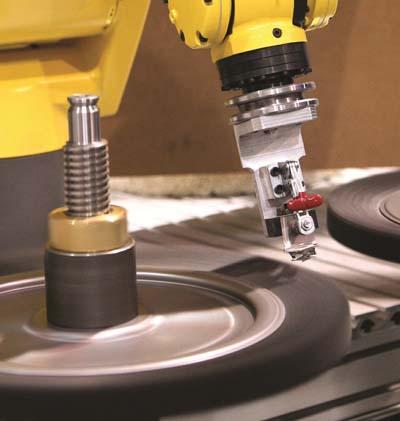
Weiler Corp. provides specialty brush deburring toolsw that feature advanced ceramic-grain filament technology. Originally introduced in 2008, the Burr-Rx product line was recently expanded to include power tube brushes, small-diameter wheels, Bore-Rx internal deburring tools, mini-disc brushes, and banded end brushes in addition to large-diameter wheel brushes and shell-mill-holder disc brushes.
The black nylon filaments of Weiler's Burr-Rx brushes are co-extruded with an engineered ceramic abrasive grain, providing cut rates up to 400 percent faster than silicon carbide or aluminum oxide filaments, the company reports. The extreme performance of Burr-Rx brushes reduce cycle times by allowing the use of high feed rates and short dwell times, resulting in increased throughput and lower deburring costs. In addition, Burr-Rx brushes can remove burrs that are reportedly impossible to remove with conventional nylon abrasive filament brushes.
Ceramic grain Burr-Rx brushes are especially well-suited for deburring tough materials such as Inconel, stainless steel, and titanium, but with an assortment of filament configurations and product fill densities, there is a high performance tool available for use on practically any material.
Contact Details
Related Glossary Terms
- abrasive
abrasive
Substance used for grinding, honing, lapping, superfinishing and polishing. Examples include garnet, emery, corundum, silicon carbide, cubic boron nitride and diamond in various grit sizes.
- aluminum oxide
aluminum oxide
Aluminum oxide, also known as corundum, is used in grinding wheels. The chemical formula is Al2O3. Aluminum oxide is the base for ceramics, which are used in cutting tools for high-speed machining with light chip removal. Aluminum oxide is widely used as coating material applied to carbide substrates by chemical vapor deposition. Coated carbide inserts with Al2O3 layers withstand high cutting speeds, as well as abrasive and crater wear.
- feed
feed
Rate of change of position of the tool as a whole, relative to the workpiece while cutting.
